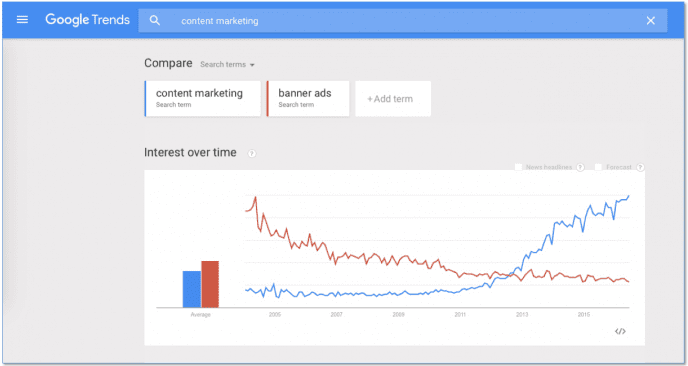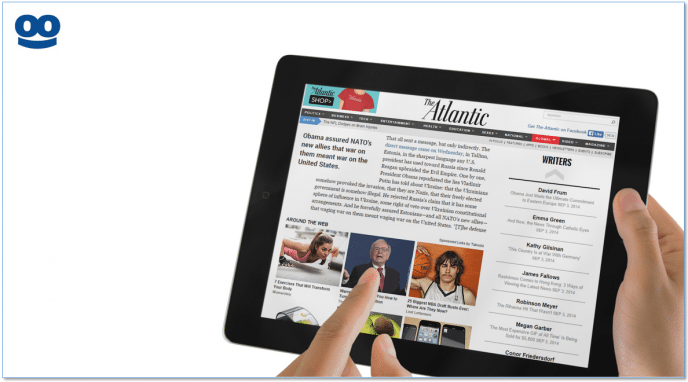Data is the primary attribute that separates digital media from other marketing channels. While traditional media leave marketers relatively in the dark when it comes to advertising performance, a digital content marketing campaign allows brands and agencies to learn which customers saw their content and how they interacted with it.
With all of this information at their fingertips, digital marketers have the unique opportunity to not only optimize content creation and distribution for the best results, but also to personalize their campaigns based on the wants and needs of individual users. Here are a few pointers for using data and personalization to improve every aspect of your content campaign, from beginning to end.
Ideation: Let Customer Data Tell You What Topics Your Content Should Cover
There’s no longer a reason for marketers to merely guess what topics their target audiences are interested in. As LUMA Partners put it in its 2016 State of Digital Media presentation, “Tech is the new editor,” and publishers of all stripes should be collecting data that shows them which content resonates best with readers and viewers.
Content marketers can do this by using analytics tools like Google Trends to determine which relevant keywords and topics are generating the most interest among users. Marketers who have run campaigns in the past can also look at how their customers have interacted with their existing content for clues about what they might want to see next.

In making these decisions, it’s important to ensure that people are actually engaging with your work rather than simply looking at it for a moment and finding something else to do. To this end, marketers can use metrics like “returning visitors” and “pages-per-visit” to see whether their content is bringing people back for more or encouraging them to browse additional content on the site.
Of course, you can’t drive engagement without a headline that piques customers’ interest and compels them to click on your content. Marketers can optimize these titles by using data-driven headline testing tools like Taboola Newsroom, Optimizely and CoSchedule.
Format Selection: Employ Audience Segmentation To Cater To Each User’s Needs
One of the biggest decisions content marketers have to make is which format of content is best for engaging a particular user. While some people respond best to a slideshow, others might be more inclined to consume an infographic or an interactive multimedia experience. Fortunately, data is here to help you make the right choice for every one of your visitors.
Two primary formats to consider are videos and text articles, each with its own pros and cons. Research from customer experience firm Clicktale finds that text content resonates best with users who arrived at your site intentionally (i.e. via search or a direct visit) and who have a specific goal in mind (i.e. to compare the features of your product to those of a competitor). Alternately, video is more effective when shown to users who arrived unintentionally (i.e. via social media or content recommendations) and are merely browsing for something that might interest them.
It’s also important to align the format of your content with the context of a user’s visit. People may be more inclined to browse videos while relaxing on the couch in the evening, versus reading text-heavy articles on their desktop during work hours. Here are a few other tips for figuring out whether video or text content may be a better fit for your content marketing campaign:

Distribution: Show Each User Contextually Relevant Content
Data is also a crucial tool for identifying your target audience elsewhere on the web and bringing them to your site with the right creative.
One way to do this is by promoting your content through discovery platforms like Taboola, which recommend articles and videos to users on sites around the web. Similar to the predictive engines that power recommendations on Amazon, Netflix, or Facebook, Taboola’s personalization algorithm analyzes factors like time of day, device type, referral source, and more to match users with the content they are most likely to be interested in consuming next.
Marketers can also use data to personalize their approach along the lines of identity-based factors, such as demographics or personal hobbies. For instance, a sporting goods manufacturer might show basketball-related content to people who have expressed interest in the NBA, whether by liking the league’s social media page or visiting its website.
Lastly, marketers can push likely customers closer to making a purchase by using data to implement content retargeting. By doing so, you can promote conversion-oriented landing pages to people who have already engaged with your previous articles and videos, thereby demonstrating interest in your brand.

Measurement: Implement Appropriate KPIs To Accurately Assess Content Performance
Once you’ve done everything possible to create and distribute engaging content, you’ll still need to use data to judge whether your campaign is actually driving the right results. Crucially, marketers can only measure correctly if they choose key performance indicators (KPIs) that tie back to their overall business goals.
Companies looking to generate brand awareness may look at metrics like completion rate (the percentage of people who finished watching a video or reading an article), scroll depth (how far down the page a reader gets), and time-on-site to gauge the interests of a visitor. Meanwhile, advertisers that are focused on direct-response may choose performance measurements like cost-per-action, app installs or sales.
In determining whether a campaign is actually leading to sales, it’s also important to use cross-device tracking and multi-touch attribution to determine which pieces of content are responsible for your success.
—
Of course, this process doesn’t end once you’ve finished measuring the results of your content campaign. In order to truly maximize return on investment, marketers must use the insights gleaned from their measured KPIs to inform future content creation, distribution and measurement initiatives.
By leveraging the data and personalization made possible by digital media, marketers can achieve a virtuous cycle, using the lessons they’ve learned in the past to make progressively smarter content decisions with each passing campaign.
To learn more about data, personalization, and the role each plays in your content marketing campaign, join Taboola @ Cannes where we’ll be hosting sessions with speakers from AOL, Ketchum, General Mills, and more. Save your seat today!
